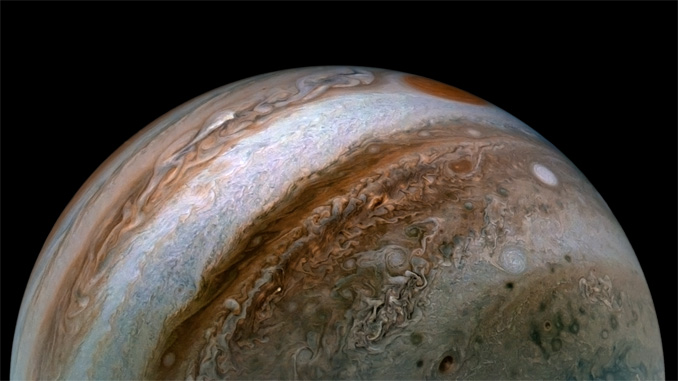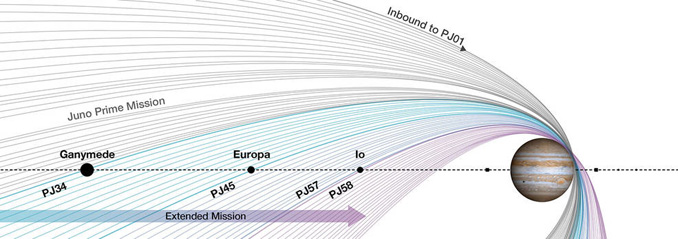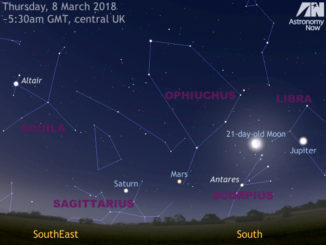
NASA has opted to extend the Juno mission to Jupiter through September 2025, expanding the spacecraft’s study of the giant planet to include multiple flybys of three Galilean moons – Ganymede, Europa and Io – and its dim rings.
“Since its first orbit in 2016, Juno has delivered one revelation after another about the inner workings of this massive gas giant,” said principal investigator Scott Bolton. “With the extended mission, we will answer fundamental questions that arose during Juno’s prime mission while reaching beyond the planet to explore Jupiter’s ring system and Galilean satellites.”
Launched in 2011, the solar-powered Juno mission reached its target in July 2016 and braked into an elliptical polar orbit allowing repeated close flybys. The spacecraft’s prime mission will be completed in July, but on 13 January, NASA announced the mission would be extended for an additional 42 orbits to study Jupiter’s north polar cyclones, the faint ring system, Ganymede (two flybys), Europa (three flybys) and Io (11 flybys).

The spacecraft also will make repeated passes through ring-shaped clouds of electrically charged ions associated with Europa and Io to better understand the radiation environment near both moons. Six of the 42 additional flybys will be focused on Jupiter’s “Great Blue Spot,”” a region of intense magnetic activity near the planet’s equator.
“With this extension, Juno becomes its own follow-on mission,” said Steve Levin, Juno project scientist at NASA’s Jet Propulsion Laboratory. “Close-up observations of the pole, radio occultations, satellite flybys and focused magnetic field studies combine to make a new mission, the next logical step in our exploration of the Jovian system.”
Data collected during Juno’s extended mission will feed directly into planning for NASA’s Europa Clipper and the European Space Agency’s JUpiter ICy moons Explorer, or JUICE.



